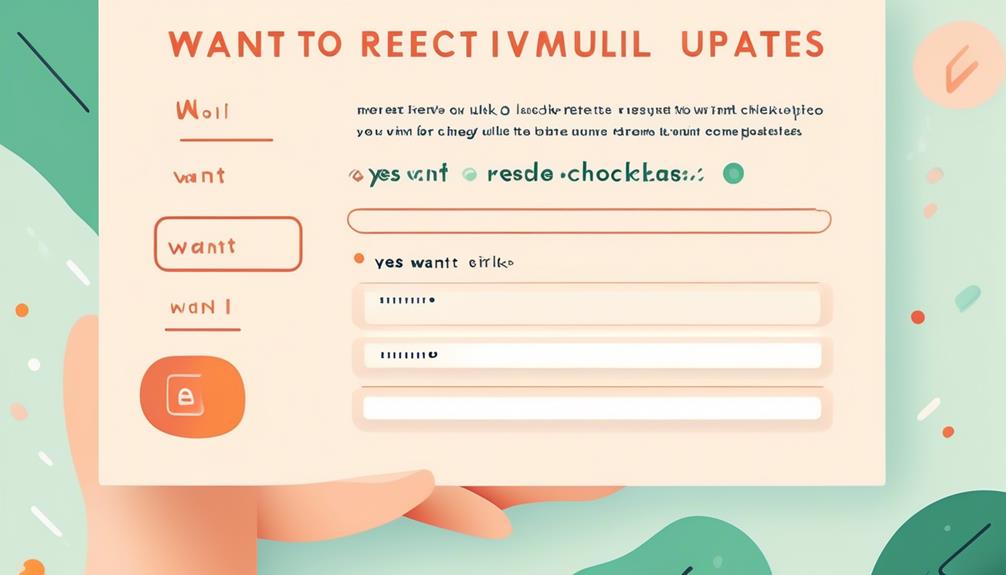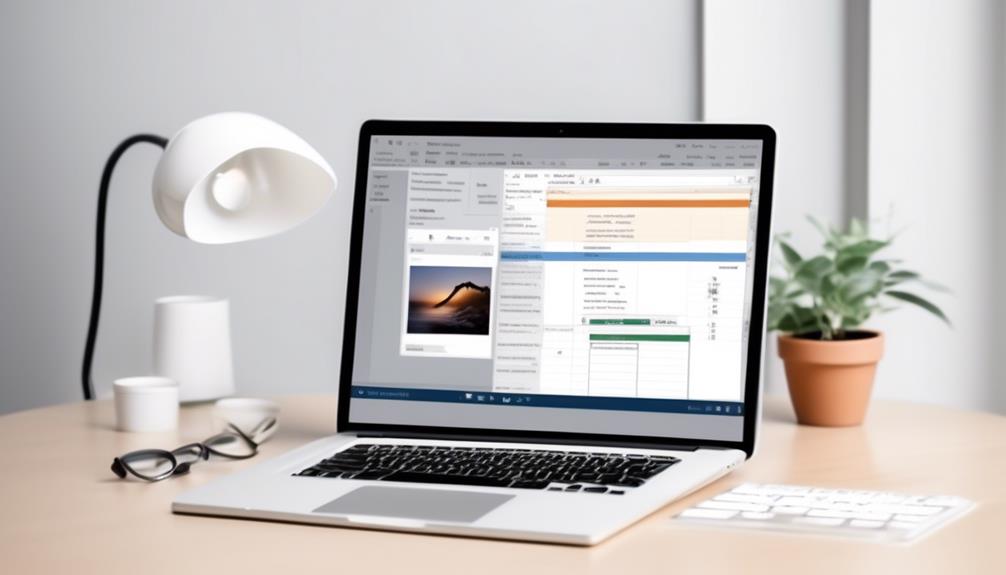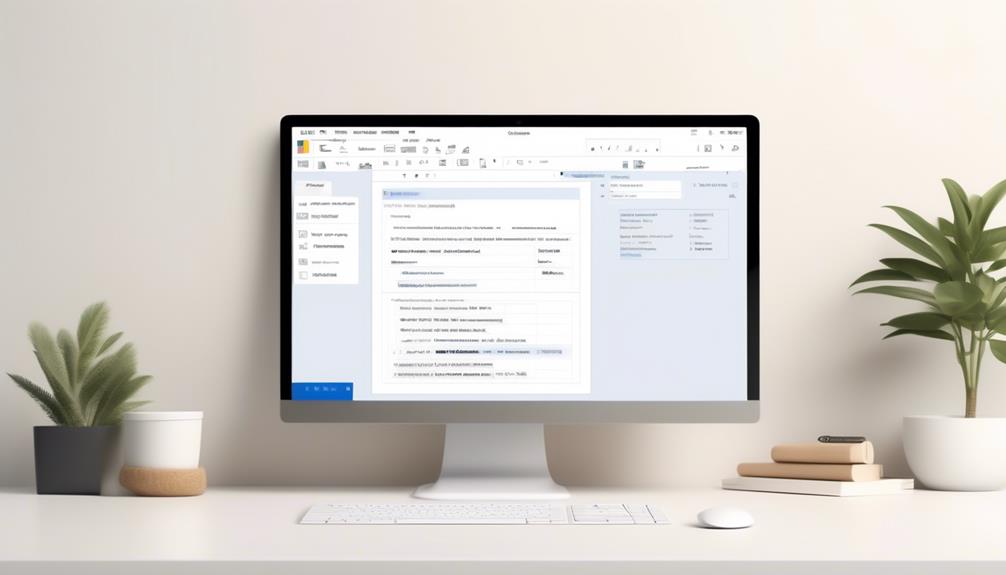Using Hotmail to send numerous emails can have its pros and cons. It provides a simple way to reach a large group of people, but it is also governed by strict rules and limitations that must be adhered to.
It's essential to understand the guidelines and best practices for sending bulk emails through Hotmail to ensure compliance and successful delivery. So, what are the specific rules and limitations, and how can one navigate them effectively while avoiding the dreaded spam folder?
Key Takeaways
- Hotmail has a maximum sending limit of 100 outgoing email messages per day.
- The sending limit can be increased by upgrading to Hotmail Plus or MSN Premium.
- It is important to follow Hotmail's guidelines and best practices for sending bulk emails.
- Proper authentication, monitoring sending volume, and maintaining a positive sender reputation are crucial for successful delivery of bulk emails through Hotmail.
Rules for Bulk Email Sending via Hotmail
When sending bulk emails through Hotmail, it's important to adhere to specific rules and guidelines to ensure compliance and successful delivery.
Hotmail imposes a maximum sending limit of 100 outgoing email messages per day, with the possibility of increasing limits by upgrading to Hotmail Plus or MSN Premium, based on account reputation. It's crucial to monitor and manage the sending limit to avoid disruptions in email delivery.
Additionally, to enhance email deliverability, it's advisable to utilize port 587 if encountering issues with port 25. Switching from LOGIN to PLAIN authentication within MaxBulk Mailer may also resolve problems and contribute to successful email transmission through Hotmail.
Adhering to best practices for sending bulk emails is essential to avoid emails being flagged as spam and ending up in the recipients' spam folder. This involves setting up valid reverse DNS records, using different IP addresses for different types of messages, and ensuring that recipients have willingly subscribed and have the option to unsubscribe.
It's crucial to avoid purchasing email addresses or using automatic opt-in forms, as this can harm domain reputation and violate spam regulations. By following these rules and best practices, we can optimize the successful delivery of bulk emails through Hotmail.
Best Practices for Hotmail Bulk Emailing

As we navigate the realm of Hotmail bulk emailing, it's imperative to adhere to best practices in order to ensure successful delivery and compliance with regulations. When sending bulk emails through Hotmail, it's essential to follow the best practices to maintain a positive sender reputation and achieve optimal deliverability.
Here are some key best practices for Hotmail bulk emailing:
- Set up valid reverse DNS records to establish your domain's credibility and improve email deliverability.
- Increase sending volume gradually to build trust with the email service and avoid triggering spam filters.
- Monitor sending volume and authentication to ensure compliance with Hotmail's outgoing email limits and avoid potential issues.
- Send email to engaged users who've opted in to receive communications to maintain a high level of interaction and minimize the risk of being flagged as spam.
Following these best practices will help you effectively manage your bulk email campaigns through Hotmail, ultimately leading to improved deliverability and engagement with your audience.
Understanding Hotmail's Bulk Email Guidelines
Understanding Hotmail's Bulk Email Guidelines is essential for ensuring compliance and successful delivery of your email campaigns. When sending bulk email through Hotmail, it's crucial to adhere to their guidelines to maintain a positive sender reputation and ensure that your messages reach recipients' inboxes. Hotmail, as a popular email service provider, has specific rules and best practices in place to regulate the sending of bulk emails.
Hotmail's outgoing email limit is set at 100 messages per day, although this may vary based on the sender's reputation within the Hotmail system and can potentially increase over time. It's important to be mindful of this restriction when planning your email campaigns.
Additionally, understanding the authentication and sending practices recommended by Hotmail is vital. This includes setting up valid reverse DNS records, sending emails at a consistent rate, and ensuring that recipients have willingly subscribed to your emails, providing a clear option to unsubscribe.
Tips to Avoid Spam Filters in Hotmail

Navigating Hotmail's guidelines for bulk email is crucial to maintain a positive sender reputation and ensure successful delivery. This includes understanding how to avoid triggering spam filters. To help stay out of Hotmail's spam filters, consider the following tips:
- Maintain Proper Authentication: Ensure that you're using the correct SMTP server settings and authentication methods to authenticate your emails properly. This can help prevent your emails from being flagged as suspicious.
- Monitor Sending Volume: Keep an eye on the number of emails you send per day and adjust your sending volume to stay within Hotmail's outgoing email limits. Exceeding these limits can lead to your emails being marked as spam.
- Engage Subscribers: Encourage engagement with your email messages to improve your sender reputation. Consider using compelling subject lines and relevant content to increase recipient interaction.
- Regularly Check Sender Reputation: Monitor your sender reputation and take necessary steps to maintain a positive standing. This includes paying attention to factors such as authentication and engagement metrics.
Ensuring Delivery Success With Hotmail Bulk Emails
To ensure successful delivery of bulk emails through Hotmail, we must maintain a consistent sending rate and authenticate the domain through SPF, DKIM, and DMARC records. By adhering to these practices, we can enhance the delivery success of our bulk email campaigns. Monitoring responses and adjusting the sending rate accordingly is crucial for maintaining a positive reputation with Hotmail and ensuring that our emails reach the recipients' inboxes. Additionally, authenticating the domain through SPF, DKIM, and DMARC records helps to verify the legitimacy of the sender, which can positively impact deliverability.
| Authentication Method | Description |
|---|---|
| SPF (Sender Policy Framework) | Specifies which IP addresses are allowed to send mail on behalf of a domain. |
| DKIM (DomainKeys Identified Mail) | Adds a digital signature to the email, allowing the receiver to verify that it was sent and authorized by the domain's owner. |
| DMARC (Domain-based Message Authentication, Reporting, and Conformance) | Provides instructions to the recipient's mail server on how to handle messages from unauthorized senders. |
Frequently Asked Questions
Does Hotmail Have a Limit to Number of Emails?
Yes, Hotmail limits the number of outgoing email messages to 100 per day, with potential increases based on account reputation.
It's important to follow best practices for sending emails, such as setting up valid reverse DNS records, sending mail at a consistent rate, and monitoring volume and authentication.
Additionally, to maintain domain reputation, only send emails to engaged users, provide easy unsubscribe methods, and avoid spamming practices.
How Do I Send Bulk Emails From Hotmail?
We can send bulk emails from Hotmail by configuring settings in MaxBulk Mailer, such as SMTP server access, connections, authentication, account ID, and password. Hotmail imposes outgoing email limits, starting at 100 messages per day. Upgrading to Hotmail Plus or MSN Premium can increase these limits.
To address port 25 issues, Hotmail servers also offer services through port 587.
MaxBulk Mailer provides features like full support for attachments, advanced mail-merge, and authentication support.
Does Outlook Allow Mass Emails?
Yes, Outlook allows mass emails, with a cap of 10,000 outgoing messages per day and a limit of 500 separate recipients for each mail.
The cap is 30 outgoing messages per minute.
Workarounds include using distribution groups or external bulk mail services to avoid hitting the limits.
It's important to adhere to best practices for sending emails, such as monitoring responses and ensuring recipients have subscribed to emails.
What Is the Bulk Email Limit in Outlook?
The bulk email limit in Outlook is 300 recipients per day. This limit applies to all Outlook versions and is designed to prevent spamming.
It's important to note that sending bulk emails should comply with anti-spam laws and best practices to avoid being marked as spam. Utilizing separate email addresses for different categories of emails can help maintain a good sending reputation.
Conclusion
In conclusion, it's important to adhere to Hotmail's guidelines for bulk email sending to ensure successful delivery.
Did you know that over 50% of emails are marked as spam based on the sender's reputation and email content?
By following best practices and maintaining a positive sender reputation, you can increase the likelihood of your bulk emails reaching their intended recipients' inboxes.










